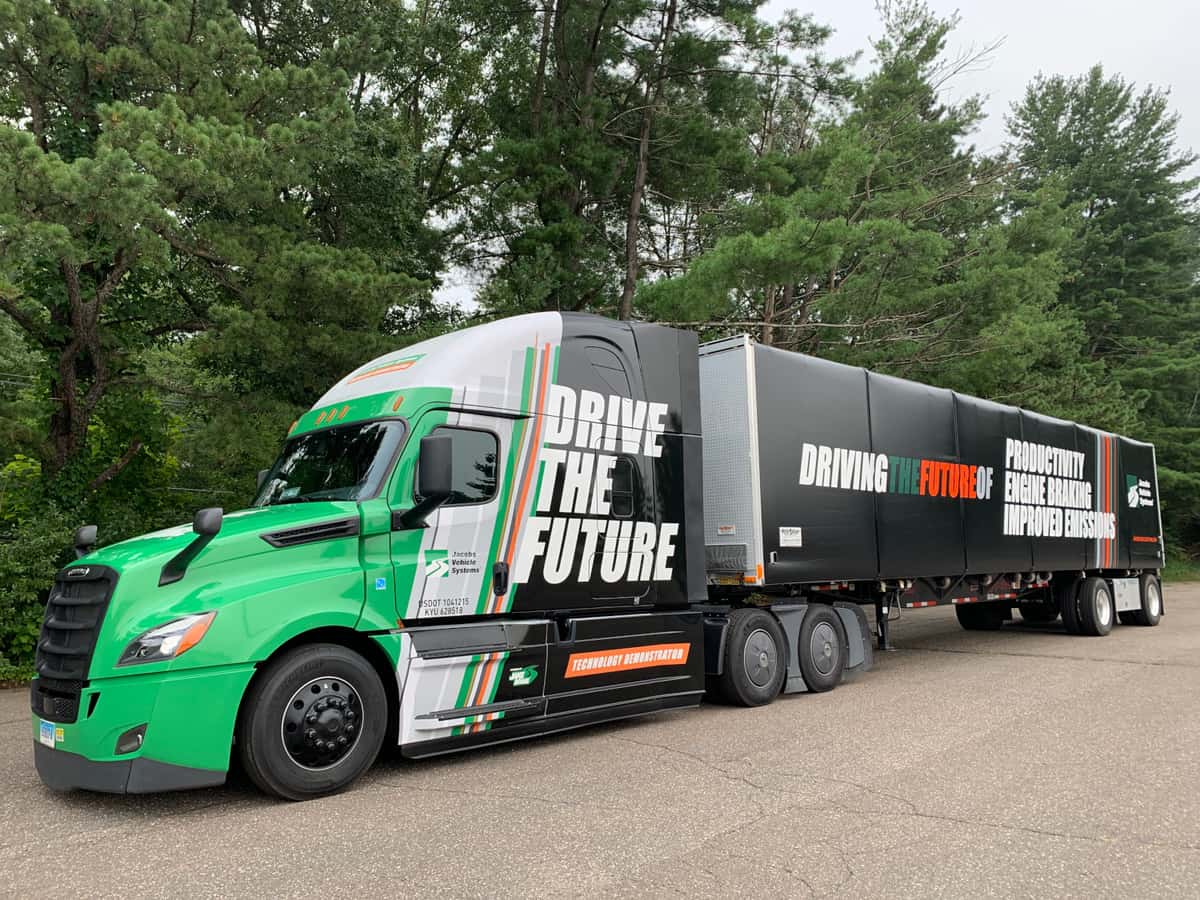Jacobs Vehicle Systems, perhaps best known for the engine brake common on so many of America’s heavy-duty trucks, is planning to roll out new products, one of which is part of the U.S. Department of Energy’s Super Truck II program.
The company’s Cylinder Deactivation (CDA) technology was installed on a 13-liter Navistar engine as part of the Super Truck II program and has been found to provide a 3% improvement in fuel consumption, the company said, along with a corresponding decrease in NOx emissions from a baseline of 0.107 grams per horsepower-hour to 0.097 grams in a heavy duty FTP (Federal Test Procedure) transient cycle test. The NOx reduction is due to the increased exhaust temperatures during cold operation while in CDA mode, which pushes the SCR (selective catalytic reduction) system to its most efficient range of 250–400 deg. C.
Robb Janak, director of new technology for the company, said the CDA effectively shuts off three of six cylinders in the engine during times of lower engine load. This also reduces fuel consumption. When the engine load increases, the additional cylinders again start working.
“We think this is an important technology that is part of meeting 2024 and 2027 [EPA Greenhouse Gas Phase 2 regulations],” Janak said.
The CDA mechanism simply keeps the valves closed in the deactivated cylinders. CDA has been in development for several years. Some passenger cars utilize the technology, but Jacobs said the versions are not robust enough for commercial applications.
“We’re excited to collaborate with Navistar on this important demonstration of the technology,” Janak said. “This is allowing us to show that this is not only ready for the road, but also for the market. It is our hope that we will be able to demonstrate even more fuel savings with CDA in real driving conditions than what we have already demonstrated in the lab.”
According to the company, any number of cylinders can be deactivated as needed, and they can be rotated so different cylinders alternate closing. At the lowest engine loads and with three of six cylinders deactivated, fuel consumption improves by up to 20%.
Jacobs’ Cylinder Deactivation hardware has so far been demonstrated on 10 different heavy-duty engine platforms, covering 7 to 15-liter engines, as well as six different heavy-duty truck road tests. It has undergone 6,900 hours and 118,000 km of durability testing.
Jacobs will also be kicking off a technology tour in 2020 to showcase two other technologies that will be making their way into production next year: High Power Density (HPD) technology and Active Decompression Technology (ADT). The tour will allow executives, fleets, dealers and service providers to experience first-hand the capabilities of these two technologies.
“We found it hard to convince end customers on a technology they don’t know, so we decided to [launch the tour],” Hiko Schmitt, business development manager for Europe said.
HPD is the next-generation engine brake for which the company is most famous. There are currently nine development programs in place, said Paul Pare, senior director of marketing and business development. Schmitt explained that HPD is “the perfect match to the things we are seeing in the marketplace,” referring to increased engine downspeeding and smaller displacement engines.
Traditionally, the engine brake has been most effective with larger engines. HPD brings that capability to smaller displacement engines, offering engine braking power at lower rpms.
According to Jacobs, HDP will:
- double the braking power at cruise speeds.
- Provide quicker up-shifting for better acceleration and hill climbing.
- promote faster trip times and increased productivity.
- increase driver confidence and comfort.
- improve service brake life.
- reduce the need for downshifting by providing power at the normal operating engine speed.
ADT could be a driver’s best friend. The technology is designed to eliminate the cab shake that drivers feel when the truck’s engine is turned on or off.
“Long term, we see more trucks starting and stopping,” Janak pointed out.
ADT is anticipated to contribute to improved cold-weather starting, increased engine cranking for easier startups, and reduced system wear.
Jacobs has a special tour truck to showcase the technologies. It is at the North American Commercial Vehicle Show this week in Atlanta, and will be at the Navistar Proving Grounds in South Bend, Indiana, in the spring of 2020, kicking off the demonstration tour. Test drive opportunities can be scheduled at https://www.jacobsvehiclesystems.com/na-technology-tour.










